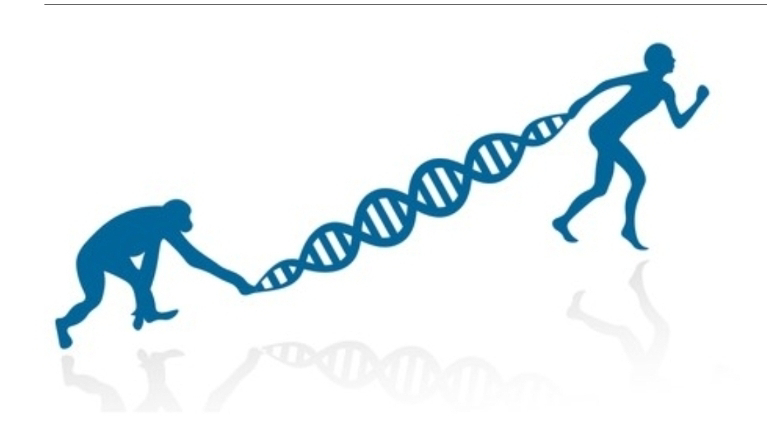Reevaluating Mayr's Proximate-Ultimate Dichotomy in Light of Epigenetics
Ernst Mayr's distinction between proximate and ultimate causation has long been a cornerstone of evolutionary biology.
Proximate causes refer to the "how" of a biological phenomenon: the immediate mechanisms, such as hormones and genes, that operate within an organism's lifetime. Ultimate causes address the "why," the evolutionary reasons that shaped these mechanisms over deep time, such as natural selection and genetic drift. This dichotomy provides a powerful framework for organizing biological inquiry. However, the rise of epigenetics has complicated this seemingly clear division, prompting a reexamination of its usefulness and its place within the broader evolutionary framework, particularly in relation to the Modern Synthesis.
The Modern Synthesis, or Neo-Darwinism, emerged in the mid-20th century, unifying Darwin's theory of natural selection with Mendelian genetics.
It posits that evolution occurs through changes in gene frequencies within populations, driven by mechanisms like natural selection, mutation, genetic drift, and gene flow. The Modern Synthesis largely views the relationship between phenotype and genotype as a one-way street: DNA sequence dictates phenotype, and evolutionary change proceeds through changes in that DNA sequence. In this view, proximate causes (the mechanisms of development and gene expression) are seen as the raw material upon which ultimate causes (natural selection) act.
Epigenetics as a Challenge to the Dichotomy
Epigenetics, the study of heritable changes in gene expression that do not involve alterations to the underlying DNA sequence, blurs the lines between proximate and ultimate causation. These changes, such as DNA methylation and histone modification, can be influenced by environmental factors, including diet, stress, and toxins.
Crucially, these epigenetic marks can be passed down to subsequent generations. This introduces a new layer of inheritance that operates on a different timescale than traditional genetic evolution.
Consider a classic example: a mother's diet during pregnancy. Poor nutrition can lead to epigenetic changes in her offspring that affect metabolic regulation.
These changes, which are a proximate response to an environmental cue, can make the offspring more susceptible to conditions like obesity and diabetes later in life. If these epigenetic marks are then inherited by their own children, a proximate environmental effect has a transgenerational impact. This challenges the strict separation of proximate and ultimate causes. The environmental stressor acts as a proximate trigger, but its effects, through epigenetic inheritance, can have long-term consequences that resemble ultimate evolutionary changes. The "how" (the epigenetic modification) becomes a part of the "why" (the long-term phenotypic outcome), as it can influence an organism's fitness and survival over multiple generations.
This is a fundamental shift from the traditional view. In the Mayr framework, a proximate response (like an organism adjusting its physiology to a new environment) is a temporary reaction. With epigenetics, this "temporary" reaction can be inherited, providing a potential mechanism for rapid, environmentally driven adaptation that bypasses the slow process of random mutation and natural selection on DNA sequences. The proximate cause isn't just the mechanism; it's also a potential driver of evolutionary change itself.
Epigenetics and the Modern Synthesis
The implications of epigenetics are even more profound when considered in the context of the Modern Synthesis. The Modern Synthesis focuses almost exclusively on genetic inheritance as the substrate for evolutionary change. It assumes that novel adaptations arise from random genetic mutations, which are then either selected for or against. Epigenetics introduces a non-genetic, heritable source of phenotypic variation. This means that a population can possess a range of different phenotypes based on epigenetic modifications, even if they have the same underlying DNA sequence.
This phenotypic variation, influenced by the environment, can cause rapid adaptation.
This challenges the central tenet of the Modern Synthesis that evolution is solely about changes in gene frequency. Epigenetic inheritance suggests that evolutionary change can also occur through the inheritance of epigenetic marks. This allows for a much more flexible and rapid response to environmental change than is possible through genetic mutation alone. For example, a population facing a new food source might undergo epigenetic changes that allow them to process it more efficiently.
These changes can be passed on, giving the next generation a head start in adapting to the new environment.
The Modern Synthesis is increasingly seen as incomplete. The evidence from epigenetics, along with other fields like developmental biology, has led to calls for an Extended Evolutionary Synthesis (EES). The EES seeks to incorporate a broader range of mechanisms into our understanding of evolution, including developmental plasticity, niche construction, and, crucially, epigenetic inheritance. The Mayr dichotomy, while still useful for organizing research questions, may be better seen as two ends of a continuum rather than a strict division, with epigenetics acting as a bridge between the two. The EES embraces this more nuanced view, recognizing that both proximate and ultimate causes can interact in complex ways to drive evolutionary change.




Comments
Post a Comment